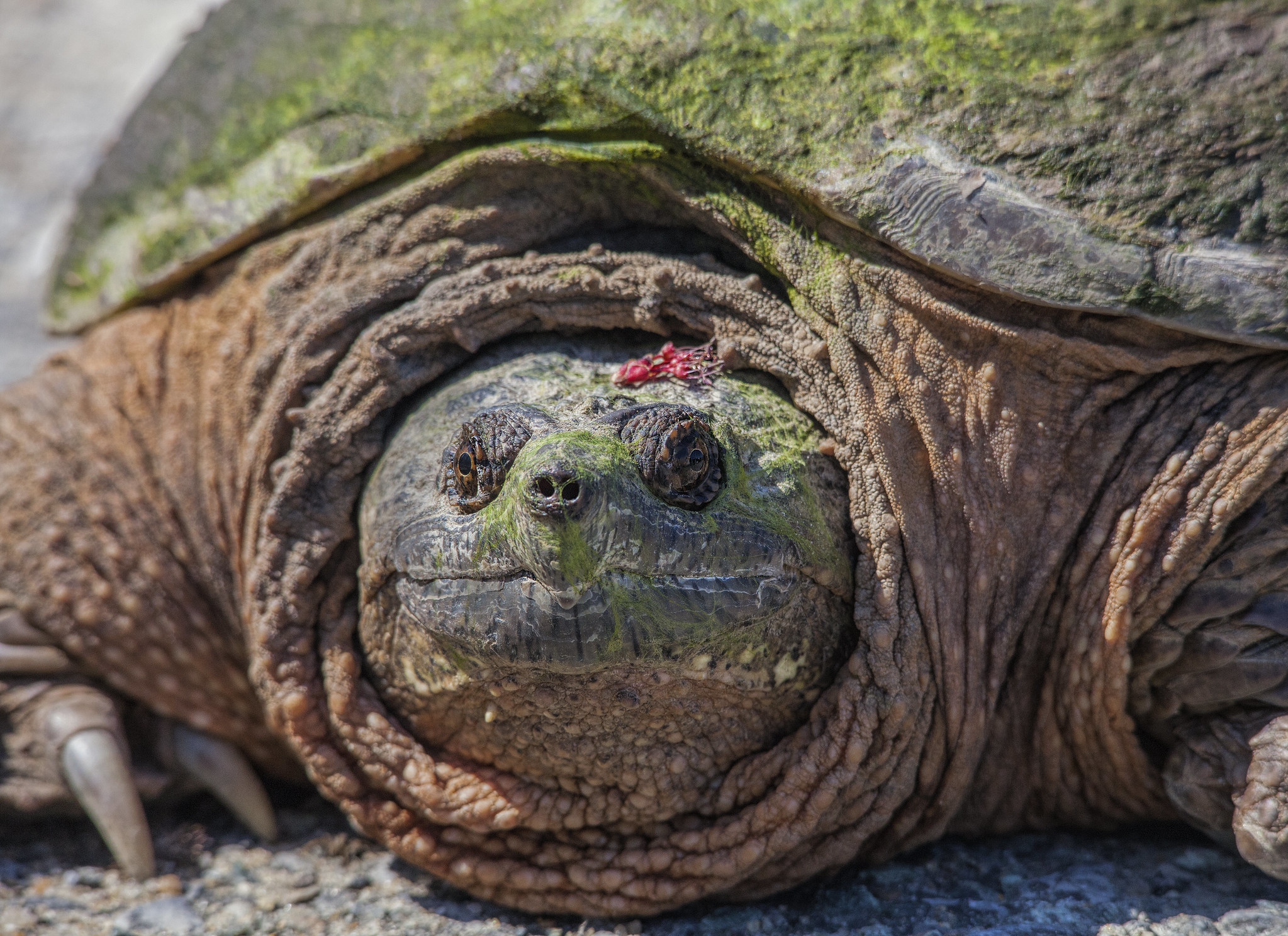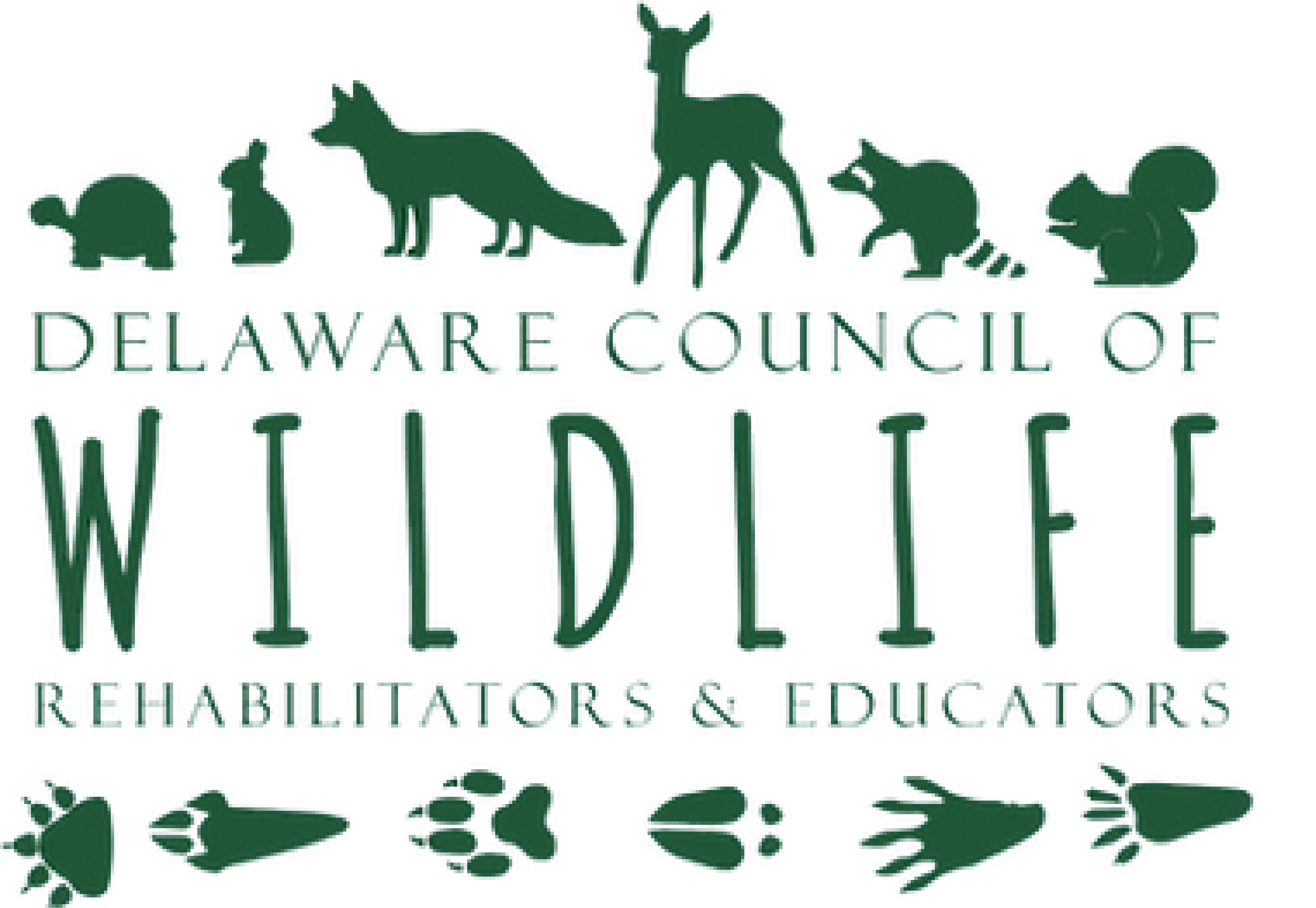
How to Help a Turtle
What to do if you find a sick (bubbling from nose or lumps on one or both sides of head) or injured (shell cracked or bleeding injury) turtle.
- Note the location! It is critical to release a box turtle where it was found. Aquatic turtles have to go back to the watershed they came from.
- Do NOT leave the turtle there. Please take it with you.
- Place it in a container (box, tub, tote) tall enough it can’t climb out or with a lid. You can put a towel at the bottom.
- If it is bleeding heavily, wrap sterile gauze around the injury. If it has a cracked shell, keep a damp paper towel over the break so it doesn’t dry out. Don’t put it in water as that may introduce bacteria into the injury.
- Take it indoors and put it in a secure, quiet place while you contact a licensed wildlife rehabilitator. If left outside, flies will be attracted to the wound, lay eggs and maggots will cause further tissue damage and even death.
- Do not offer food or water.
- If you have any questions about the need for help, contact a wildlife rehabilitator.
Turtles, an ancient life form
Turtles are most obviously identified by their shell and sharp horny beak. Most species in Delaware are aquatic or semi-aquatic and hibernate underwater. Only the box turtle is terrestrial and hibernates on land in loose soil and decaying vegetation. Mating for all species typically takes place in the spring and, in late May through July, the female digs a hole in the soil and lays eggs. Almost all turtles lay oval eggs except the snapper whose eggs are round like a ping pong ball. The female then covers the eggs and departs without providing any parental care. It is interesting to note that the temperature of the nest and eggs determines the sex of the hatchlings. Warmer temperatures result in a higher number of females. It is during the nesting season during their travels, when aquatic turtles are most likely to be injured by vehicles. Land clearing land for development, automobile or mower strikes, dog chewing on a shell, and collection as pets are the most common reasons for any turtle to come into rehab.
Eastern Box Turtle
The only mostly terrestrial turtle species in Delaware, this turtle is easily identified by its highly domed shell (up to 6 inches shell length). The coloration is mostly dark brown to black with patterns of orange and yellow on the shell, head, and legs. The plastron (bottom shell) is hinged so it can close entirely with the head and legs safely inside. Hatchlings look very different as the shell is flatter, greyish-brown, and usually has yellowish marks along the middle of the back. This woodland species is omnivorous eating slugs, earthworms, insects, fruit, and even carrion. In Delaware, box turtles are considered of
SGCN as populations have declined due to habitat loss and collection as pets.
Eastern Snapping Turtle
This is our largest resident turtle with adults up to 19 inches in length with a fairly flat carapace (back shell). The carapace has distinct ridges, and this is the only species with a strongly serrated (toothed) back edge on the shell. Even hatchlings try to bite and are distinctive due to the long tail which equals the length of the shell. Snappers are rarely out of the water unless nesting so most coming into rehab are females with injuries from vehicle strikes. Snapping turtles are aggressive predators that eat anything they can catch including aquatic animals, reptiles, birds, small mammals and aquatic vegetation.
Mud and Musk Turtles
These two species are semi-aquatic, but poor swimmers so they mostly walk underwater. They have musk glands which secrete foul smelling secretions. The mud turtle grows to a shell length of 4 inches with a smooth brown domed top shell. The head and neck are brown with yellow spotting. The bottom shell has double hinges. The musk, or stinkpot, grows to 4.5 inches with a dark shell. The head and neck are grayish to black with yellowish stripes on both sides between the eye and mouth. The bottom shell has only one hinge.
Eastern Painted Turtle
The painted turtle has a smooth flattened shell with a maximum shell length of six inches. The shell is generally black with large scutes (scales) in rows separated by yellowish markings. The head is black with yellow marks behind the eyes. Painted turtles are often seen basking in the sun on logs in ponds, frequently in the company of redbelly cooters, a much larger turtle.
Spotted turtle
This small turtle reaches no longer than 4 and a half inches shell length. It is dark brown to black typically with yellow spots on the back shell. This species prefers quiet shallow pools such as freshwater wetlands and vernal pools. It is listed as a Species of Greatest Conservation Need (SGCN) in Delaware.
Bog Turtle
A small turtle (3.5 inches) similar in appearance to the spotted turtle. The bog turtle is easily identified by an orange blotch on either side of the neck. It is found in New Castle County and listed as a SGCN primarily because of declining habitat: spring-fed wetlands and wet meadows, and pet collection.
Redbelly Cooter
This is the large (up to 1.5 inch) dark-shelled turtle often seen sunning on floating logs in freshwater ponds. The dark shell usually has dark reddish markings. Hatchlings are green with yellow striping on shell edges. This species is omnivorous but eats more plant materials as it ages.
Diamondback Terrapin
One of the larger Delaware turtle species with females up to nine-inch shell length and males 5.5. The shell has variable coloration but is generally greyish with darker rings on the scutes. The skin is grey with dark spots and the beaks (“lips”) are pale yellow. This is a coastal species common in the Delaware Bay and other brackish (salty) waters such as salt marshes and tidal streams. Their carnivorous food habit attracts them to baited crab pots hence the law requiring turtle exclusion devices on the openings of crab pots. Many are struck by vehicles around Indian River Inlet Bridge as they cross the road looking for sandy nesting areas.
Red-ear Slider
This is an introduced species in Delaware. Hatchlings were sold by the thousands in the 1950s-1970s. Most died in captivity, but some were dumped into ponds and rivers and established reproducing populations. The defining characteristic is a broad red stripe behind each eye. [Note: If red-ear sliders come into rehab in Delaware, they cannot be released as they are considered invasive and adversely impact native species.
Note: Some species of sea turtles do enter Delaware waters seasonally. They can be identified by their flipper-like limbs as opposed to feet with claws. All injured sea turtles should be reported to MERR (302-228-5029) as they are listed as threatened or endangered under the authority of the US Fish and Wildlife Service.
